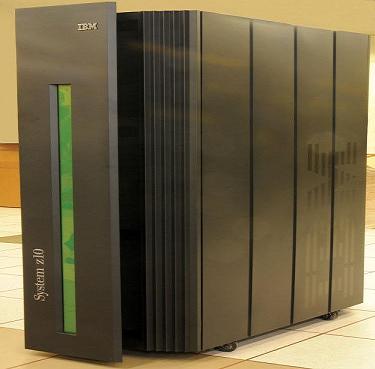IPCS
Interactive Problem Control System (IPCS)
 Please! Verify all
details or suggestions with the appropriate vendor and / or vendor's
manuals. Please! Verify all
details or suggestions with the appropriate vendor and / or vendor's
manuals.
z/OS V1R12.0 MVS Interactive Problem Control System (IPCS) User's Guide
Website
Analyzing Dumps
z/OS V1R12.0 MVS Interactive Problem Control System (IPCS) User's Guide
SA22-7596-07
Dumps produced by an MVS™ system fall into two categories:
Formatted dumps: SYSABEND and SYSUDUMP ABEND dumps and SNAP dumps. IPCS cannot be used with formatted dumps.
Unformatted dumps: SVC dumps, SYSMDUMP ABEND dumps, and stand-alone dumps. IPCS formats and analyzes unformatted dumps.
When you submit unformatted dump data sets to IPCS, it simulates
dynamic address translation (DAT) and other storage management
functions to recreate the system environment at the time of the dump.
IPCS reads the unformatted dump data and translates it into words. For
example, IPCS can identify the following:
Jobs with error return codes
Resource contention in the system
Control block overlays.
IPCS also helps your own dump analysis. For example, you can:
Format control blocks. IPCS inserts field names into the output and displays the data in columns by field.
Browse unformatted dump storage. IPCS allows you to easily follow
pointers to other locations in the dump. It also retains addresses of
certain locations in the dump.
Reduce the size of a stand-alone dump. You can reduce the size of a
stand-alone dump as you transfer it from tape to a direct access
storage device (DASD) for IPCS processing.
SYSMDUMP
Defined by JCL (DSN=xxx)
Machine readable
Normally read through IPCS
Caused By:: An abend condition (and only taken if the step contains a SYSMDUMP DD statement).
STANDALONE
Defined by installation (tape or disk)
Machine readable
Printed and formatted through IPCS
Caused By: Operator doing an IPL of the standalone dump program.
DYNAMIC (SVC Dump or SDUMP)
SYS1.DUMPxx
Machine readable
Printed and formatted through IPCS
Operator entering DUMP command.
FRR (SVC Dump or SDUMP)
SYS1.DUMPxx
Machine readable
Printed and formatted through IPCS
Caused By: DFSMS ESTAE exit or functional recovery routine detecting an
error. (For example, an ABEND071 "PSW restart key depressed" causes an
FRR to take a dump.)
Notes:
For a complete description of the IPCS dump formatter, see z/OS MVS IPCS User's Guide
The IPCS SUMDUMP option provides a useful summary of failure-related information from SYS1.DUMPxx data sets.
For detailed information about diagnosing dumps, see z/OS MVS Diagnosis: Tools and Service Aids
z/OS MVS IPCS User's Guide
SA22-7596-08
Purpose of this information: This information
describes how to use the interactive problem control system
(IPCS). It explains how to start and use IPCS to analyze dumps
and traces, and describes various functions and facilities that
are available through IPCS.
This information does not try to explain MVS™ system concepts, such as
error recovery or dumping and tracing services. Instead see the
following topics for that information:
z/OS MVS Diagnosis: Tools and Service Aids describes how to
obtain dumps and traces and how to analyze them.z/OS Problem
Managementgives procedures for diagnosing problems on MVS
systems. Who should read this information: This information is
for anyone who performs diagnosis of software on an MVS system.
Usually, this person is a systems programmer.
This information stresses the use of IPCS as an aid in dump and trace analysis, and assumes that the reader:
-
Understands basic MVS system concepts.
-
Can code JCL statements to run programs or cataloged procedures.
-
Can code in assembler language and read assembler, loader, and linkage editor output.
-
Understands commonly-used diagnostic tasks.
-
The audience for this information ranges from users who have no
-
previous experience with IPCS to those who have extensive IPCS experience.
-
Because of this wide range in experience level, this information is written with two groups of users in mind:
Users with little or no IPCS experience
Users
in this group need to understand what IPCS does and learn how to
begin using IPCS to diagnose problems. If you are new, or nearly
new, to IPCS, you might want to concentrate on Getting started
with IPCS.
Experienced users
Experienced users already know the basics of starting and using
IPCS. Users in this group need information on some of the more
sophisticated aspects of IPCS, so that they can obtain maximum
benefit from its use. If you are an experienced user, you might
want to browse Getting started with IPCS and concentrate on Using
IPCS functions.
Website
|





